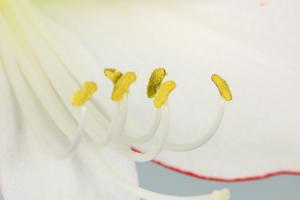What Happens to a Plant Cell in Distilled Water?
Distilled water is pure and free from minerals and other impurities that can affect the chemical balance of a solution. However, when plant cells are exposed to distilled water, interesting things happen. This article explores the changes that occur to a plant cell when it is placed in distilled water.
What is a Plant Cell?
A plant cell is the basic unit of life in plants. It consists of a cell wall, cell membrane, and cytoplasm. The cell wall provides rigid support and protection while the cell membrane regulates the movement of materials in and out of the cell. The cytoplasm is the gel-like substance that contains organelles such as ribosomes, mitochondria, and chloroplasts.
The Role of Water in Plant Cells
Water is essential for the survival of plant cells. It plays a crucial role in many processes such as photosynthesis, respiration, and the transportation of nutrients. The cell membrane of a plant cell is selectively permeable, which means that some substances can pass through while others cannot. Water molecules can pass freely through the cell membrane due to their small size and polar nature.
What Happens When a Plant Cell is Placed in Distilled Water?
When a plant cell is placed in distilled water, a few things occur. First, water moves into the cell due to osmosis. Osmosis is the movement of water molecules from an area of high concentration to an area of low concentration through a semi-permeable membrane, which is the cell membrane in this case. Since the water in the distilled water has a higher concentration of water molecules than the cell, water moves from the distilled water into the cell.
As more water enters the cell, the cell expands and turgor pressure increases. Turgor pressure is the pressure that the cytoplasm exerts on the cell wall. The cell wall is rigid and prevents the cell from bursting under pressure. However, when the turgor pressure becomes too high, the cell may burst due to the delicate nature of its membrane.
The Consequence of Too Much Water
When a plant cell is exposed to too much water, it can lead to a condition known as plasmolysis, which is the shrinking of the cytoplasm due to the loss of water. Plasmolysis occurs when a plant cell is placed in a hypertonic solution, which means that the concentration of solutes outside the cell is greater than inside the cell.
In the case of distilled water, since there are no solutes or minerals, the solution is hypotonic, which means that the concentration of solutes outside the cell is less than inside the cell. This causes the water to move into the cell through osmosis and increase turgor pressure.
If the plant cell is exposed to distilled water for an extended period, it can lead to the bursting of the cell due to high turgor pressure. This can cause irreversible damage to the cell, which can affect its ability to perform its functions.
The Importance of Maintaining Proper Water Balance
The proper water balance is essential to ensure the survival and function of plant cells. Too much or too little water can lead to damage or death of the cell. Therefore, it is essential to provide plants with the right amount of water to maintain their health and optimize their growth.
In Conclusion
Plants are highly dependent on water for their growth and survival. When plant cells are exposed to distilled water, they absorb water through osmosis, which can increase turgor pressure and potentially lead to the bursting of the cell. Therefore, maintaining the proper water balance is crucial to ensure the health and function of plant cells.

 how many times do yo...
how many times do yo... how many planted tre...
how many planted tre... how many pine trees ...
how many pine trees ... how many pecan trees...
how many pecan trees... how many plants comp...
how many plants comp... how many plants can ...
how many plants can ... how many plants and ...
how many plants and ... how many pepper plan...
how many pepper plan...






























